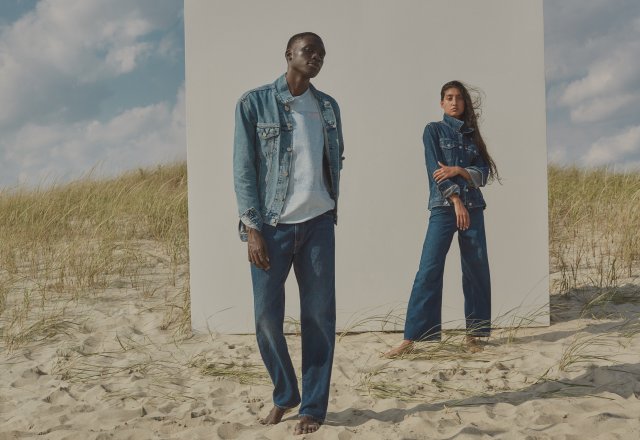
Saving The Planet, One Pair Of Jeans At A Time
Saving The Planet, One Pair Of Jeans At A Time

Fast fashion has a bad reputation as the second-largest polluter in the world. It’s a $2.5 trillion industry and let’s face it, it lives up to its name. When people want fashion, they want it fast. This often leads to fashion manufacturers cutting corners, particularly when it comes to the planet.
The industry plays a huge role in greenhouse gas emissions, energy and water wastage, but the good news is that some major companies are taking positive change onboard. And while they still provide “fast” fashion, they do so through sustainable practices. Levi's is a prime example.
So, how are they doing it?
Saving The Planet
Levi’s dedication to sustainable practices began back in 1991 when they developed their Terms of Engagement, a Code of Conduct that was a guide to the ethical production of clothing. It was a landmark document at the time for the industry, and since then, many other major brands have done the same.
Levi's included commitments to sustainable denim production, including significant reduction in water use, a 25% reduction for greenhouse emissions and elimination of hazardous chemicals in clothing manufacturing. Since then, the company has introduced many methods towards more sustainable design and production, particularly looking at sustainable materials, water usage and product lifecycle.
Saving Water
Water scarcity is becoming a major challenge around the world, and the fashion industry plays a huge part in this. In 2013, Levi’s Product Lifestyle Assessment identified that nearly 3,800 litres of water were used in the lifecycle of a single pair of 501 jeans – and although consumer garment care plays a significant role here, it was cotton cultivation and garment production that Levi’s could influence most.
Since then, Levi’s have established more than 20 different Water<Less™ manufacturing techniques, which help produce the same jeans while reducing water usage. The company sometimes uses a thimble of water and a bit of ozone rather than detergent. Fabric softener is used to make the denim soft, rather than numerous washes; jeans may be tumbled with stones and even golf balls, taking the water out of the wash altogether. The final look is exactly the same as the look you love – but you can rest assured knowing their Water<Less program has helped save more than 4.2 billion litres of water and recycle over 9.6 billion more.
The brand is also working with suppliers to do the same. The goal is for all key suppliers to use the Water<Less technology by 2025 and for 50% reduction of water use in manufacturing in water-stressed areas by 2030.
Sustainable Collections
The Levi's Wellthread range is their most sustainable collection. These pieces are produced with less water and fewer chemicals, promotes fair labour and are 100% recyclable. It’s made from cottonised hemp, which comes from rain-fed hemp crops grown with fewer pesticides than cotton and leaves behind cleaner, healthier soils. And of course, this range has the Water<Less technology at its core.
Levi's is increasingly moving away from more environmentally taxing materials like cotton and focusing on innovation like cottonised hemp and TENCEL™ Lyocell, a fibre produced from sustainably harvested wood. Tencel™ - a sustainable alternative to viscose - is soft, breathable and features in a range of Levi’s men’s and women’s styles.
If brands like Levi's are making a difference with sustainability, we can do the same – starting with making quality choices about the clothes we buy and being more conscious about how we care for them. Levi’s asks customers to wash less, wash cold, line dry and if a time comes when a garment no longer has a place in your wardrobe, then donate or recycle it!
